The Flower Memorial Library: A Gift From Emma Flower Taylor To The City Of Watertown, NY.
During one of the most prosperous times of Watertown, N.Y.’s history, it didn’t have a public library. The Roswell P. Flower Memorial Library would be commissioned by one of its own, Emma Flower Taylor, two years after her father’s death at a time when Andrew Carnegie was building public libraries across the entire nation at an unprecedented rate. This is the winding history of how the library came to be, shining the light on the little city that could proudly do with a gift from one of its own.
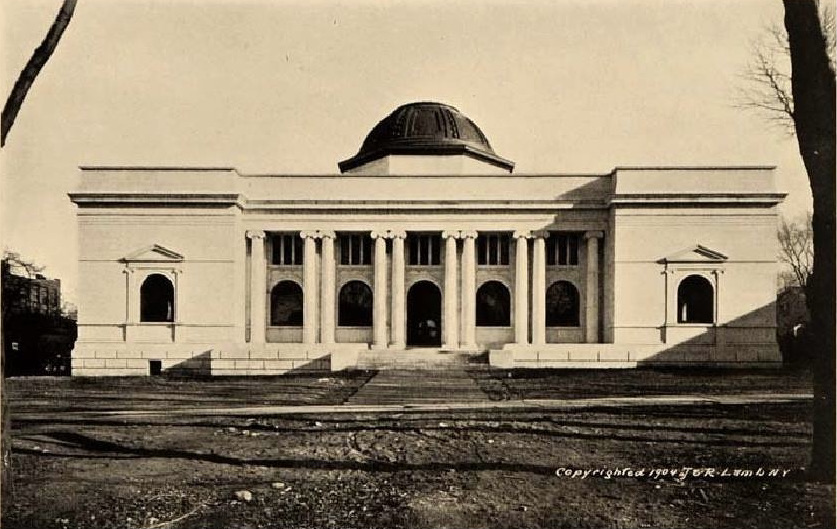
The story begins at the turn of the century, on January 10th, 1900, to be specific. The Watertown Volunteer Fire Department had accumulated an impressive amount of money and was considered amongst the richest in New York State, with an aggregated value of $40,000.
The volunteer department was soon to cease as an active fire-fighting organization and was contemplating how best to supply the city with an enduring moment. One of the more popular ideas was to donate the money for the erection of a library building and donate it to the city of Watertown, which, despite its wealth and growth, had lacked a public library – something that would mentioned seemingly ad infinitum in the local newspapers.
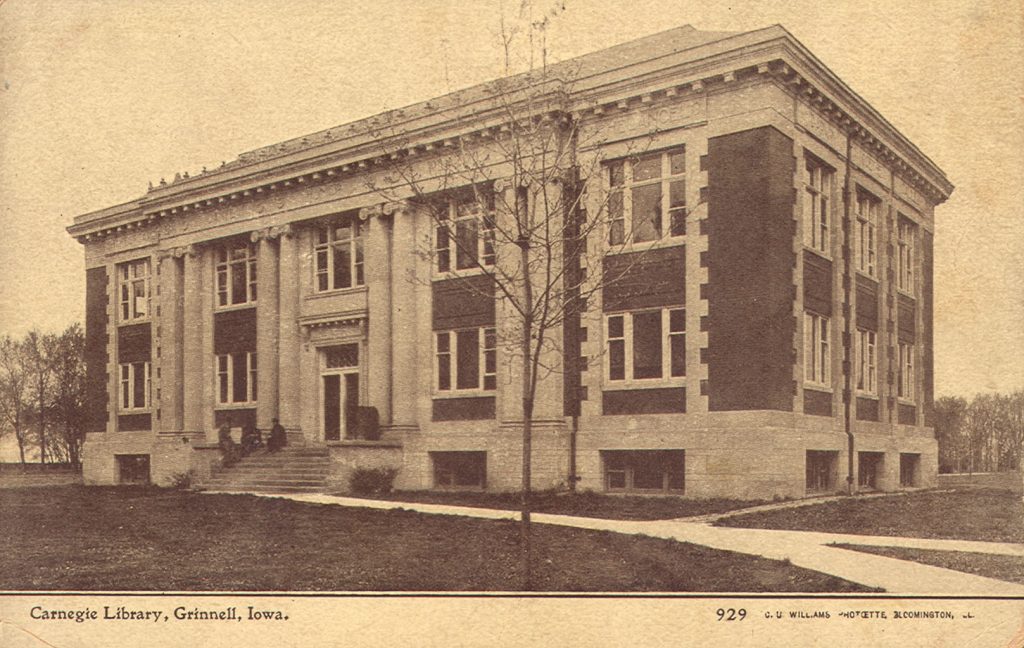
Also frequently mentioned in the Watertown Daily Times was Andrew Carnegie’s generous donation of money for public libraries throughout the country to cities and towns of all sizes. Carnegie would often give $40-50,000 thousand for the construction of a public library, with the stipulation that the city or town selects a suitable site and appropriates $5,000 a year to maintain the institution.
Larger cities would benefit much more, particularly Pittsburgh, Pa., where he built the Carnegie Steel Company, which he would sell in 1901 for $303,500,000, forming the basis of what became the U.S. Steel Corporation. This is of particular note because in the Flower history because in 1898-99, Roswell P. Flower was credited with the Bull Run on the stock market and, at the time of his death, had been planning acquisitions that included Andrew Carnegie’s steel holdings a year and a half before J. P. Morgan purchased them in 1901.
Flower’s death opened the door for Charles Schwab, President of Carnegie’s Steel, to secretly make a deal with Morgan and other investors. Schwab would then become the president of U.S. Steel Corp and later build his 75-room mansion “Riverside” on the Hudson in New York City.
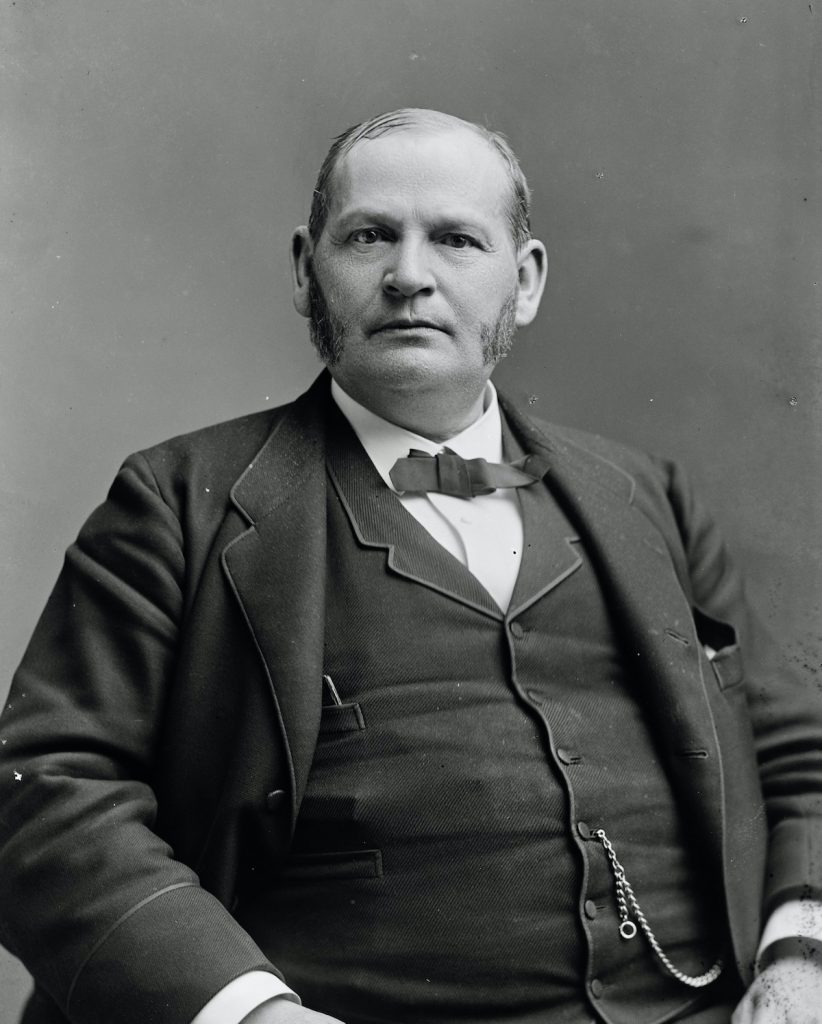
Nevertheless, Andrew Carnegie became the richest man in America and, over the course of the last 18 years, gave away around $350 million (roughly $5.2 billion in 2020). In 1899, the aggregated value of Carnegie’s gifts would amount to $3,504,500 to libraries alone. Pittsburgh, Pa. would top the list in terms of value at $1,750,000 – a figure that would ultimately double before all was said and done, plus an additional $4,000,00o for an art gallery and museum.
The Watertown Daily Times would document just about every benefactor and amount as they arose. Barely a few days would go by, and a public library was mentioned in its pages. By the end of January, a column in the Times states, “Wealth and Duty: possession of money imposes obligation towards others” and “Watertown has its claim.” Rev. H. N. Dunning would lecture “The Responsibility of Wealth,” echoing some of Andrew Carnegie’s message of philanthropy in 1889. The Times would report–
It is also the duty of the wealthy to see that their less fortunate brethren have the opportunities of education and self-improvement, and here the speaker said that most of the work of extending educational facilities by legislation had been accomplished by the workingmen rather than by the wealthier employers.
In this connection he called the attention to the fact that Watertown has no public library worthy of the name, no place where the man whose income will not allow him to buy the books that he needs for improvement f his mind and the advancement of his condition can obtain this.
He deplored this condition, and said that it was a stigma and reproach upon the wealth of Watertown that this long-existing want had never been supplied.
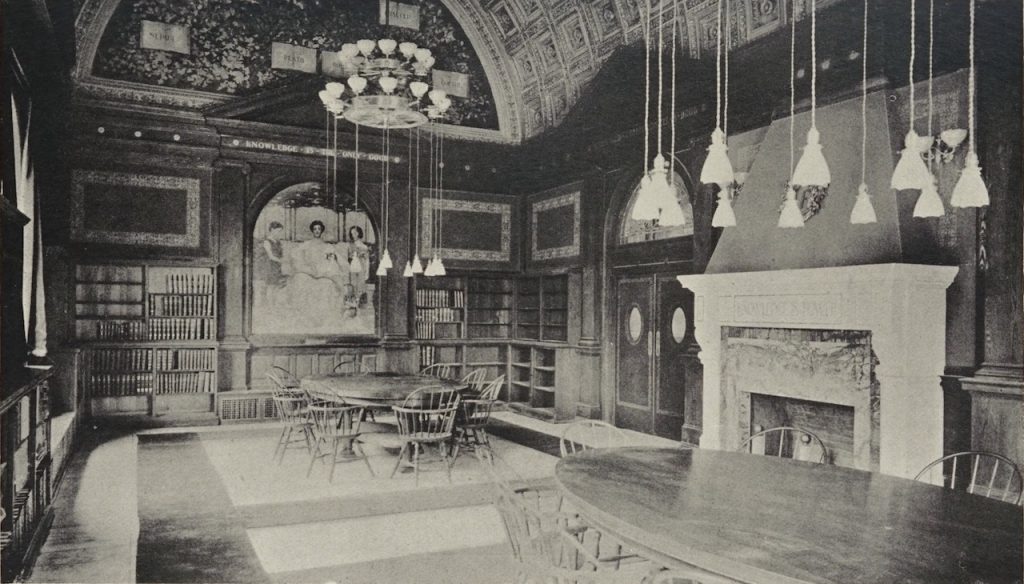
Less than a month later, the Times would state in a short paragraph that they saw a library building in the near future, “and thinks it knows where it is coming from. It is unnecessary to say that the community will welcome the gift, and thank the door. Further particulars are promised later.” And then, the wait would begin.
In February, Rev. H. N. Dunning, along with Rev. M. Y. Bovard of the State Street M. E. Church, was one of the earlier proponents of a public library. He sought, and subsequently received, approval from a number of citizens to send a letter he had prepared to Mr. Carnegie, asking that he give Watertown a sum deemed appropriate for a city of its size.
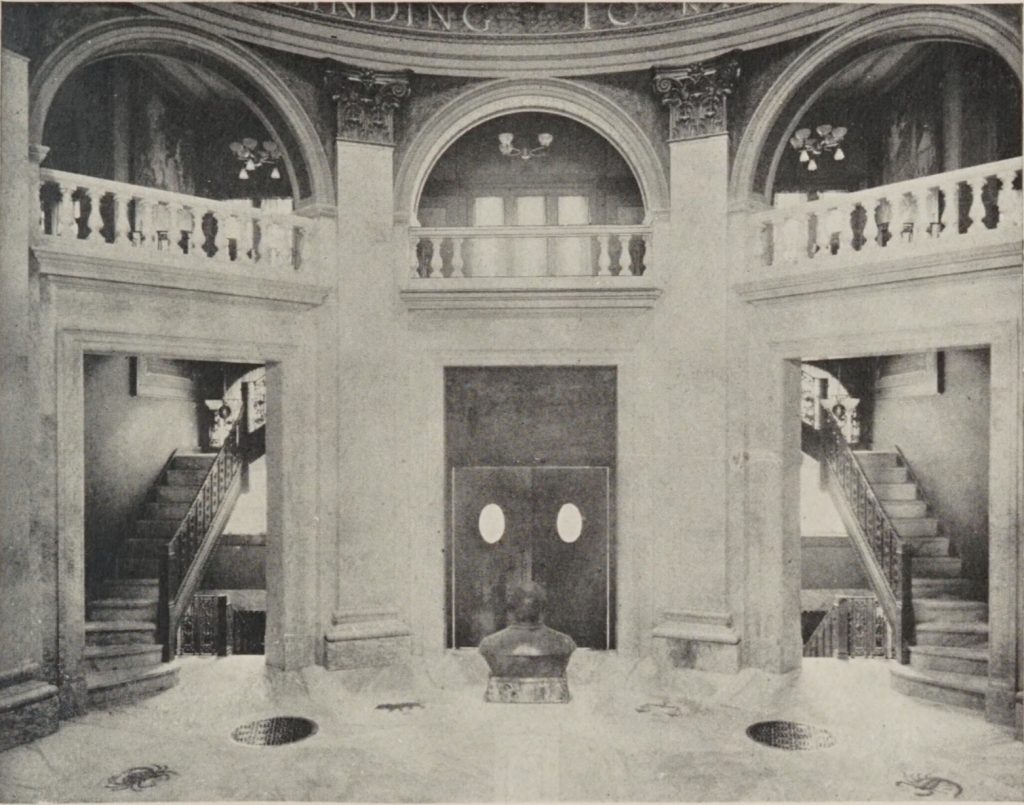
The Watertown Daily Times Begins Subscription Campaign Drive
With discussion of the Watertown Volunteer Fire Department’s contributions to building a library dying down and no further particulars on any gifts to build one a year after stating they saw one being built in the near future, the Watertown Daily Times would take charge of a subscription to procure funds from the community itself.
The first mention would come on February 16, 1901–
For Library Fund
The Gabriels Reading circle send $16 to the Times Public library fund, the proceeds of their social Thursday evening. The fund grows slowly, but it grows. Watertown shall have a public library, even if it does not get one from Mr. Carnegie.
No amount was too big or small for the Watertown Daily Times to publish. Meanwhile, Carnegie’s gift-giving was printed on a seemingly daily basis. Adding to the feeling of being left out, smaller communities around Watertown were finding themselves opening public libraries. Alexandria Bay, Theresa, and Adams would all open libraries while Watertown continued to slowly build funding with a goal to raise $11,000 for the purchase of the Emerson house on Washington Street.
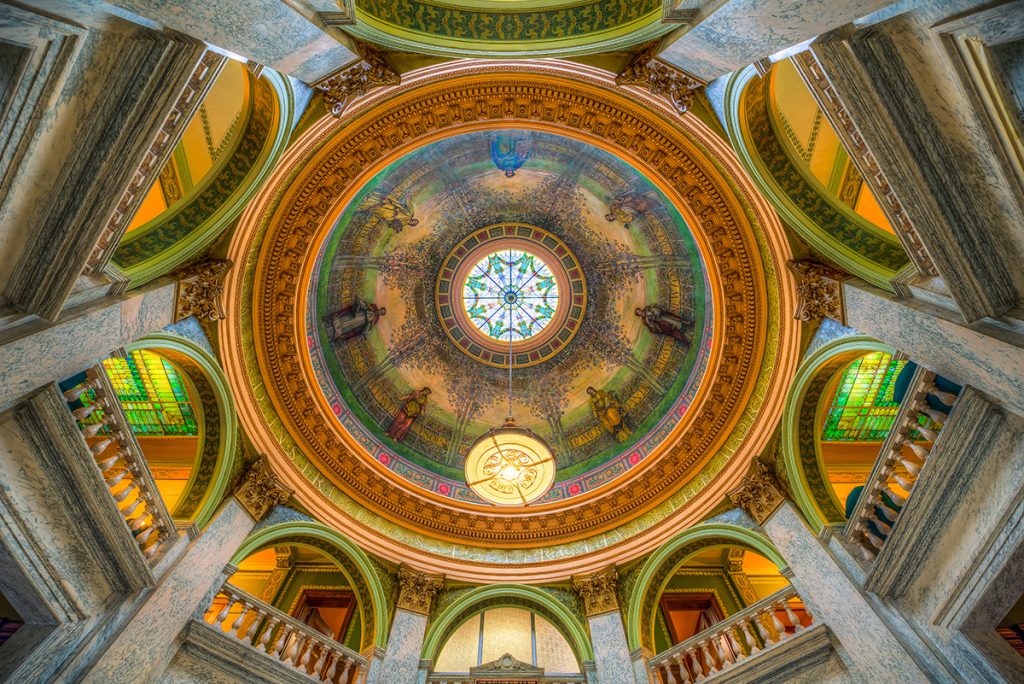
On March 9, the Times would print “Low fares for next Friday” by the New York Central railroad in conjunction with the Ernest Seton-Thompson entertainment at the City Opera House as a means of helping to raise funds benefiting the public library. A special half-price fare round-trip to Watertown and return from all New York Central points would help to both raise awareness and funds. The profit would net $223.00 for the library fund.
Meanwhile, Carnegie offered three Indiana cities funding for libraries and $100,000 to Ottawa, Canada, but nothing to Watertown, N.Y.
On March 8th, George B. Massey would be selected as trustee for the citizens as one of the signees of an agreement to purchase and hold the Emerson property for the purpose of the public library. Massey would also contribute the largest sum to date, $500.00.
News of Watertown’s efforts to raise its own funding spread across the state. On March 14, 1901, James P. Kirby, Chief of Detectives in the State Department of Excise, would write the following to the Times–
Albany, March 14, 1901
I am very much in sympathy with the efforts that are being made by yourself and other citizens of Watertown to further the project of obtaining a public library and reading room for the city, and take pleasure in enclosing here with a check for $5.000 as my subscription towards the funds for securing the Emerson property or any other that the committee may deem best for the purpose.
I am very truly yours,
JAMES P. KIRBY

By March 18th, the subscription drive would raise $1,002.08. Meanwhile, just eight days later, the Times reported the good fortune of Utica, receiving a gift from the Proctor family, a valuable tract of land for the construction of a $165,000 public library. That same day, Watertown would receive a gift from afar–
Wilkes-Barre, Pa., March 26, 1901
Watertown Times, Watertown, N.Y.:
Our attention has recently been called to the fact that the citizens of Watertown are making an effort to raise by subscription enough funds to support a free public library in that city. As we are formerly citizens of Watertown and believing the object to be a worthy one we enclose our check for $35.00.
$25 donated by F. M. Kirby
$5 donated by D. O. Roberts
$5 donated by F. J. Weckesser.
Trusting that you may be successful in raising the required amount, we are, Yours truly,
F. M. Kirby & Co.
A few days later, on March 30, 1901, the Daily Times would dedicate nearly a full page to some of the “Imperishable Monuments to Andrew Carnegie’s Philanthropy.”
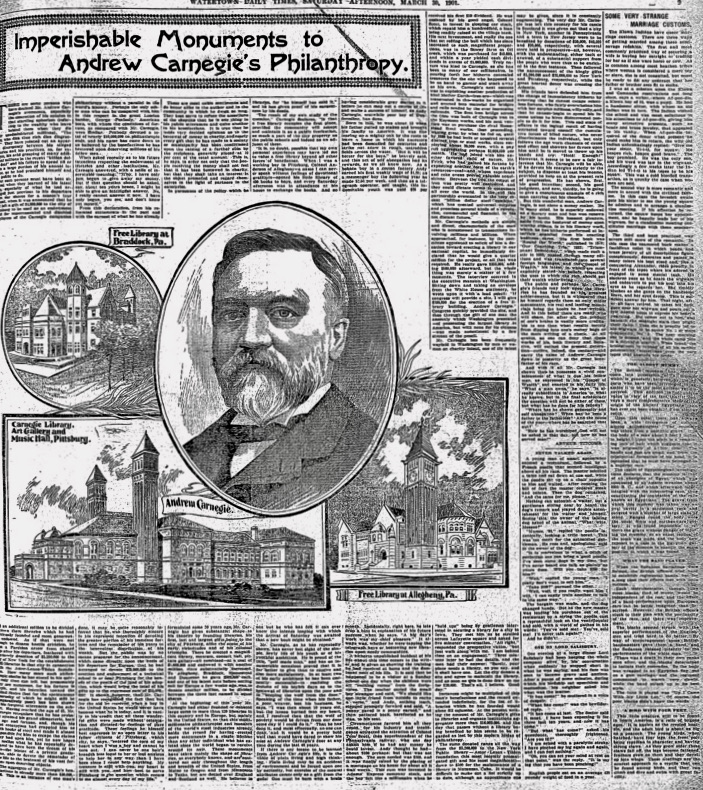
By April 3, the subscription would inch forward with another $500 contribution from Edwin Paddock, the total now $4,349. Many of it came from smaller amounts given by citizens, ranging from $1 to $10, while John C. Knowlton would chip in another $500. It only seemed a matter of time before the Times reached their goal.
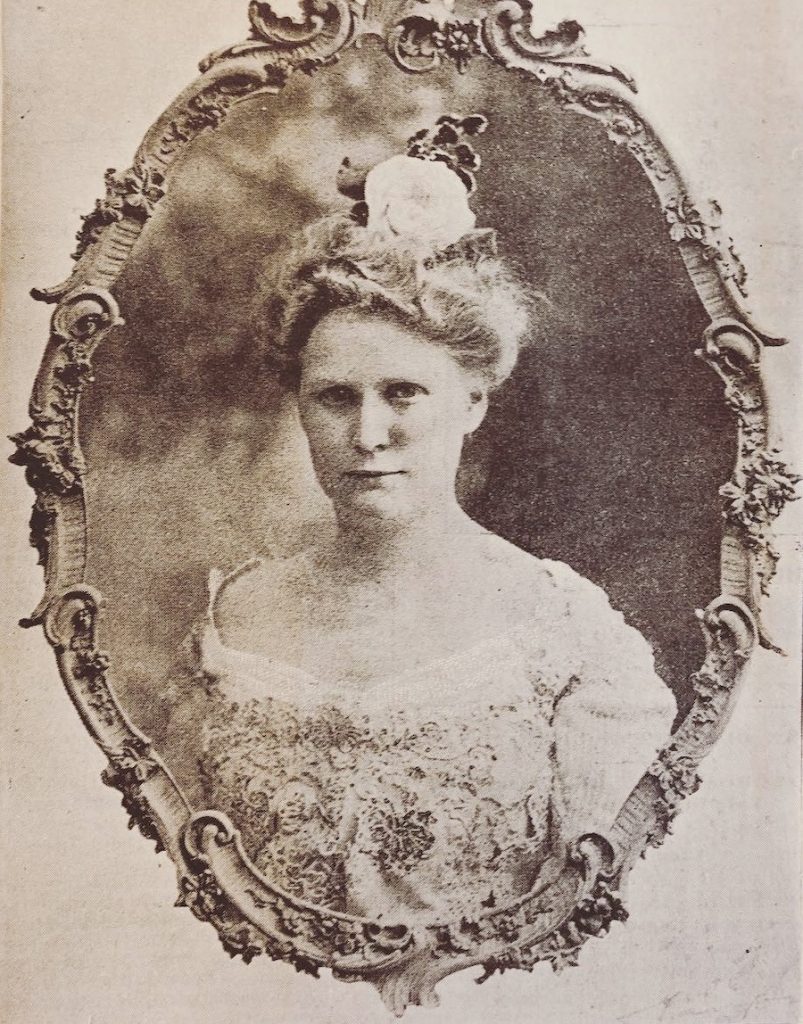
And then, on April 5, 1901, the news broke: Emma Flower Taylor offered to the city to purchase the site, erect the building and buy books in a $60,000 gift to the city as told in her letter written to the Times on stationary from the Waldorf Astoria–
New York, April 5, 1901.
The Watertown Times, Watertown, N.Y.:
Dear Sirs: Rather than have the city of Watertown go outside her own community to secure a public library, I would be willing and glad to pay for the land, lately purchased for this purpose and with the balance of sixty thousand dollars ($60,000) build a library and buy books for the same, and give to the city of Watertown, subject to the same conditions as would exist had the gift been made by Mr. Carnegie, which, I understand, is that the city of Watertown will provide for the maintenance, buying new books, keep the building and books insured, etc., to the extent of at least five thousand dollars annum.
Further, that it shall be named the Roswell P. Flower Memorial Library.
That Mayor Wilbur F. Porter and Mr. W. D. McKinstry be appointed a building committee, with power to increase their numbers to not more than 11 members.
That plans be procured from both local and out-of-town architects, none of which, however, shall be accepted without my approval.
That the money already subscribed be used toward the first year’s maintenance, or returned to the subscribers.
If this meets with the approval of the committee having the matter in charge and of the citizens of Watertown, please advise me.
Sincerely yours,
Emma Flower Taylor
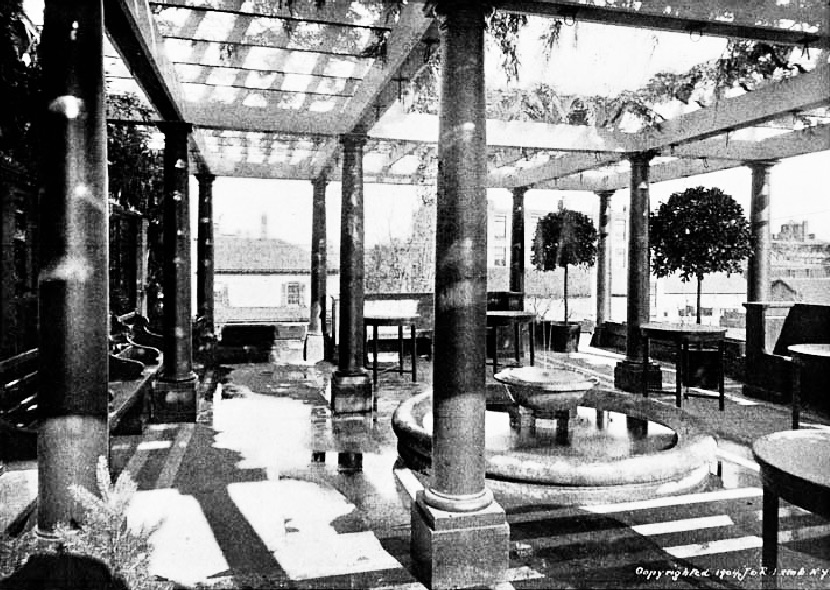
J. B. Taylor had made inquiries regarding the status of the subscription drive and the representations that had been made to Mr. Carnegie. After finding nothing to propose a hindrance to the plans for the Flower Memorial Library, he met with the Times and Mayor Porter to present the offer. The Times would further report–
That it will be hailed with joy and promptly accepted seems beyond question. Within the past few weeks in its effort to secure a fund to purchase the Washington Street Property, in many conversations with citizens, the wish has been expressed that some one or many in our city could be memorialized in the library building rather than Mr. Carnegie, whom Watertown people never saw or knew. And it is with full confidence of unanimous support that the assurance is given that no other name would be more accepts as a substitute than that of the daughter of Roswell P. Flower.
Mrs. Taylor requests an answer. The Times suggests that the people of Watertown, assembled in mass meeting, send the answer themselves, as the best way to give proof of their pleasure at the generous gift and their willingness to accept it on the safe terms named by Mrs. Taylor.
And with that purpose in view, a public meeting is called to be held at the City Opera House Monday evening.
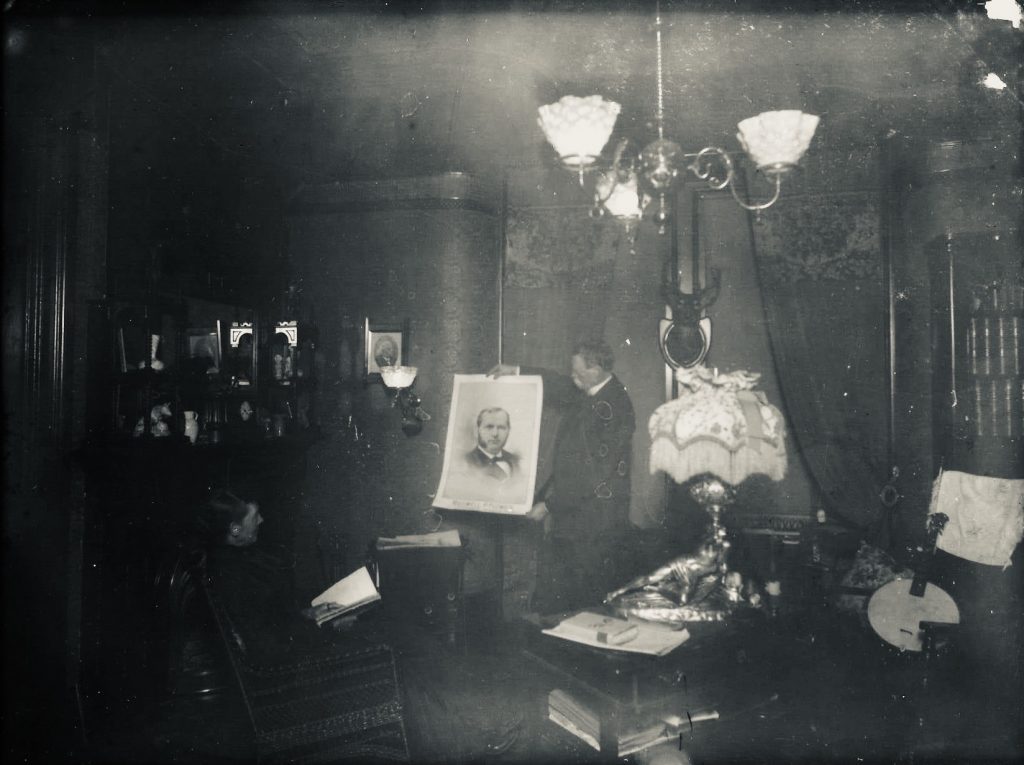
The Gift Of The Roswell P. Flower Memorial Library Proudly Accepted By The People Of Watertown
On a rainy, cold Monday night, a large audience would gather at the City Opera House and listen to a number of speeches: some recounting the efforts to obtain a library over the previous several years, others toward the future and how the Roswell P. Flower Memorial Library would be a magnificent structure the city would treasure for years to come and all expressing their heartfelt gratitude and pride. Mayor Porter would proclaim–
That noble woman who stepped forward and made that generous offer to the city of her home was Emma Flower Taylor. Fellow citizens, we are here tonight in this public assembly to give expression of our thanks and gratitude and appreciation of that gift. It assures us a building that will stand as a bright feature in the city, a splendid structure.
It goes further–it meets the gaze of every person, to perpetuate the memory of that noble man who was the father of this noble woman who is making this noble donation; and I feel as though I could imagine, even now, looking down from the window of heaven, Roswell P. Flower smilingly approving of this noble gift of his noble daughter. I say, God bless her and hers, now and forever.
Emma Flower Taylor, who had just offered $100,000 in support of the Flower Hospital her father provisioned in New York City, graciously stated in response that she was pleased her offer to the city was accepted but that credit belongs to those who initiated the proposals in the first place which resulted in such a pleasant endeavor for her to memorialize her father’s legacy further.
On May 2, 1901, a bill was signed by Governor Odell authorizing Watertown to accept the gift of the Roswell P. Flower Memorial Library. The following day, Mr. and Mrs. J. B. Taylor would return from New York City and the Emerson property on Washington, held in trust by George Massey, was transferred to them to start the process of planning the demolition and constructing the library.

On Second Thought…
The Building Committee for the Roswell P. Flower Memorial Library would have its work interrupted by Emma Flower Taylor, who procured an additional lot of land in June 1901. This gave her what was described as “better architectural advantage” and allowed for more frontage area for the building. In addition to purchasing the lot, she added another $15,000 to the construction total.
Four days later, it was announced that Emma Flower Taylor had increased the gift for the Flower Memorial Library to $200,000 (over $6,500,000 in 2021 currency value.) In addition, more specifications were given with regard to what the building should look like. As reported in the Daily Times on June 18th–
The building is to be of white Gouverneur marble, and the committee desires either Greek or French renaissance style of architecture with dome. It is to be situated on a lot about 100 feet wide in front, 150 feet in the rear and 805 feet in depth.
A building is desired with the usual library conveniences, including library proper, children’s room, conversation room, a cozy and home-like reading room with fire place, librarian’s office, an assembly room large enough to accommodate at least 100 persons, and adjoining this room with floor space of at least 500 square feet for the use of the County Historical Society and Daughters of the American Revolution for their manuscripts, relics, records, etc.
The committee estimates the floor space required to be about 8,000 square feet exclusive of stack too and basement. Watertown has a present population of 22,000.
Emma Flower Taylor would offer up a competition to architectures for submitting plans for the Flower Memorial Library, the first price being $200, or the accepted plan and the commissions for doing the work. Second prize: $150. Third Prize: $100. The committee would judge the designs submitted with the use of an expert if deemed necessary, though their final decision was subject to the approval of Mrs. Taylor.
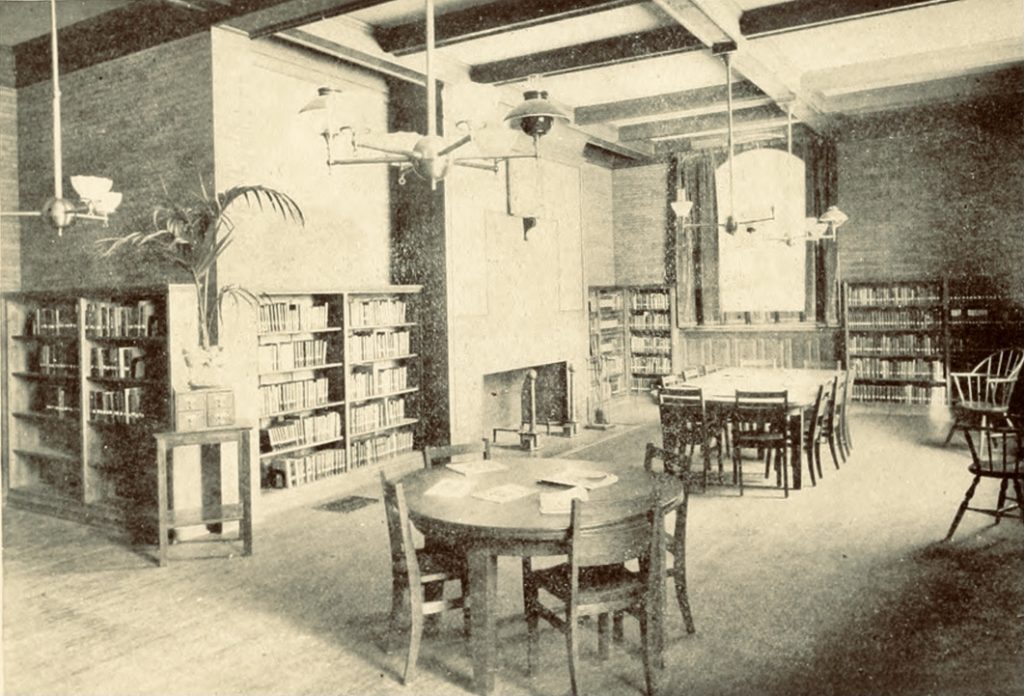
With bids in hand as of May 9, 1902, the contract would be awarded to John Solar on condition that the building be completed on October 11, 1903. Construction would begin July 11, 1903, with the cornerstone being laid; the library would have its grand opening on November 10, 1904, just a little behind schedule. Charles R. Lamb of New York would design the interior decorations, having worked on the Emma Flower Taylor mansion just several years before.
The Watertown Daily Times dedicated nearly three full pages covering the events of the ceremony, officially dedicating the Roswell P. Flower Memorial Library and the history of how it came to be. Along the journey, Emma Flower Taylor had said these words of her father–
He impressed upon me that wealth was a great responsibility and that one is only the steward of it. He used to say, “when you get your board and clothes out of life, then share what is left with others.”
“The first important lessons of life I learned were independence, self-reliance and fair play, also a proper sense of humility. My mother taught me as a boy that there was nothing so contemptible as a coward, nor so mean as a liar. That with her seemed to cover everything and when one reflects, courage and truthfulness do seem to include all of the essential virtues. Never do a mean thing for money. To get rich be always sober, industrious, honest and economical.”
One could very well say, she was a chip off the old block.
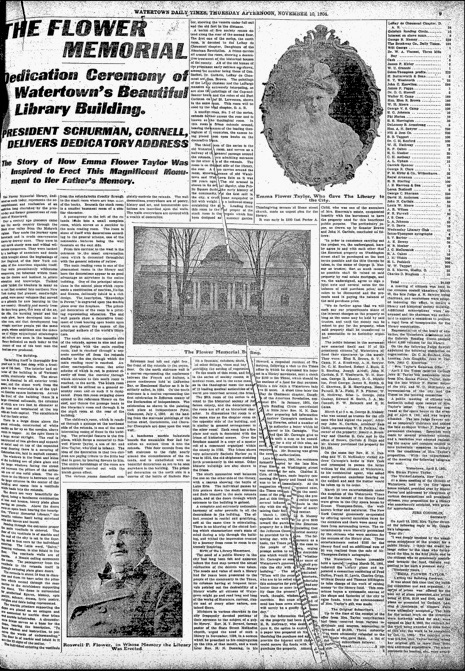
Footnote
Evergreene Architectural Arts recently restored and cared for the Roswell P. Flower Memorial Library. Click here for information on their efforts and photos of the project.
If you’re interested in helping the library through various options, you can find more information by clicking here and scrolling to the bottom of the page.
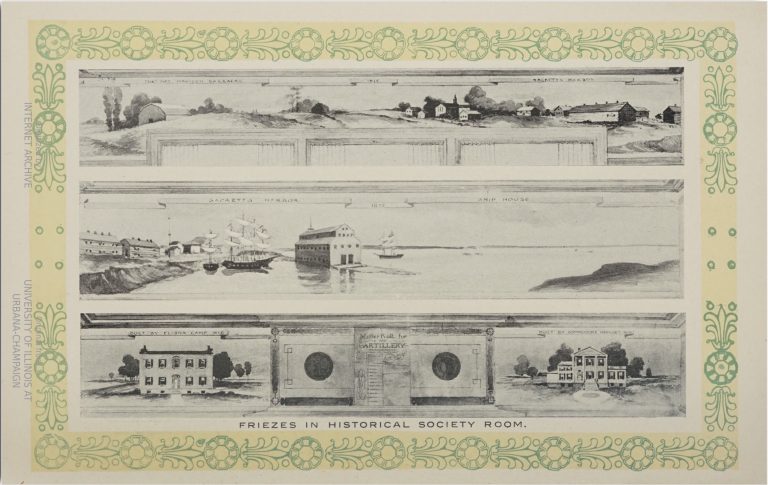
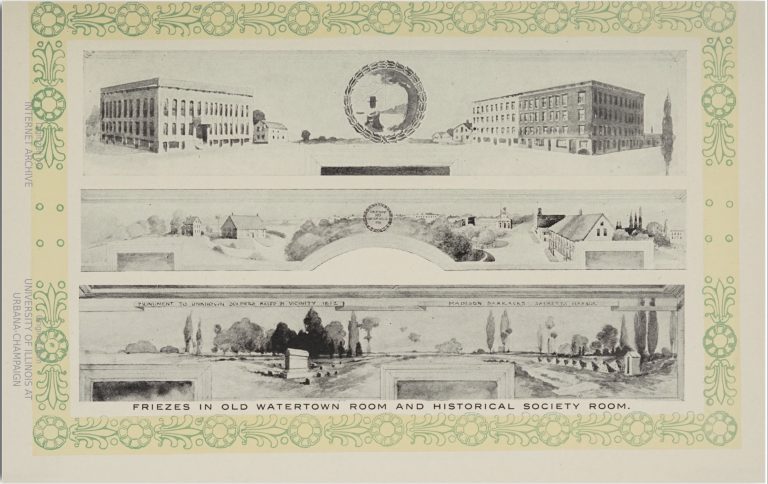

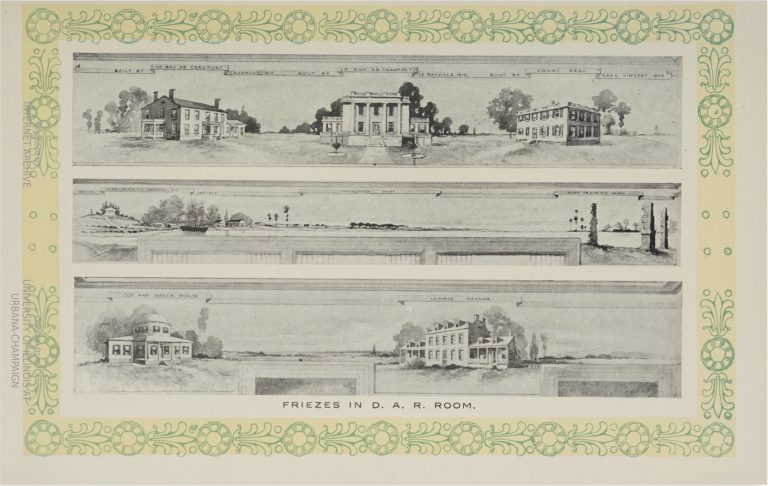
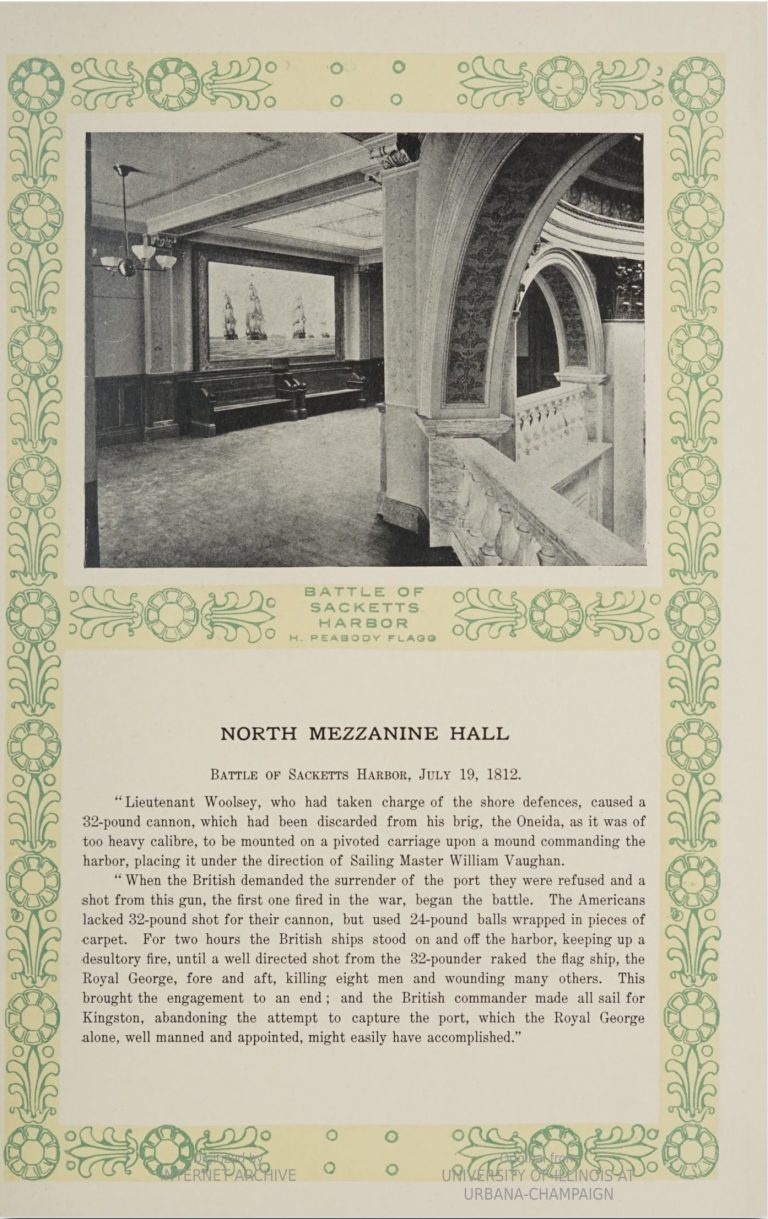
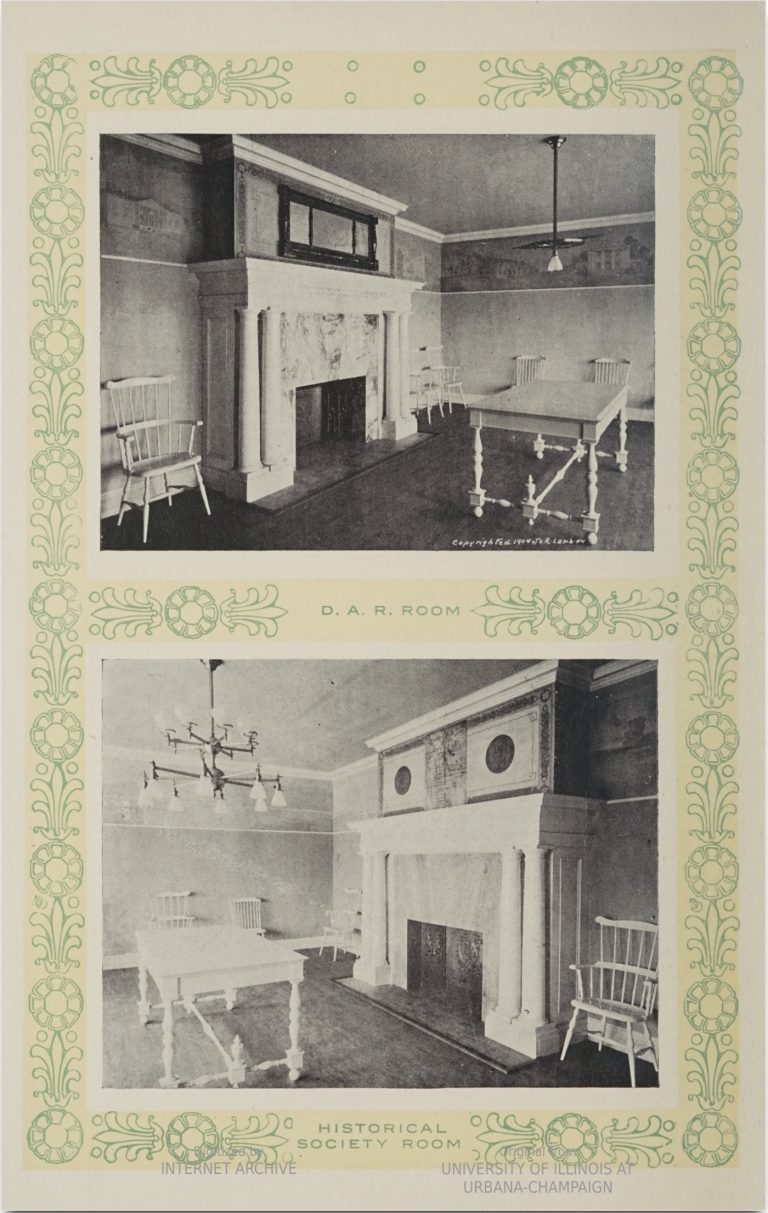
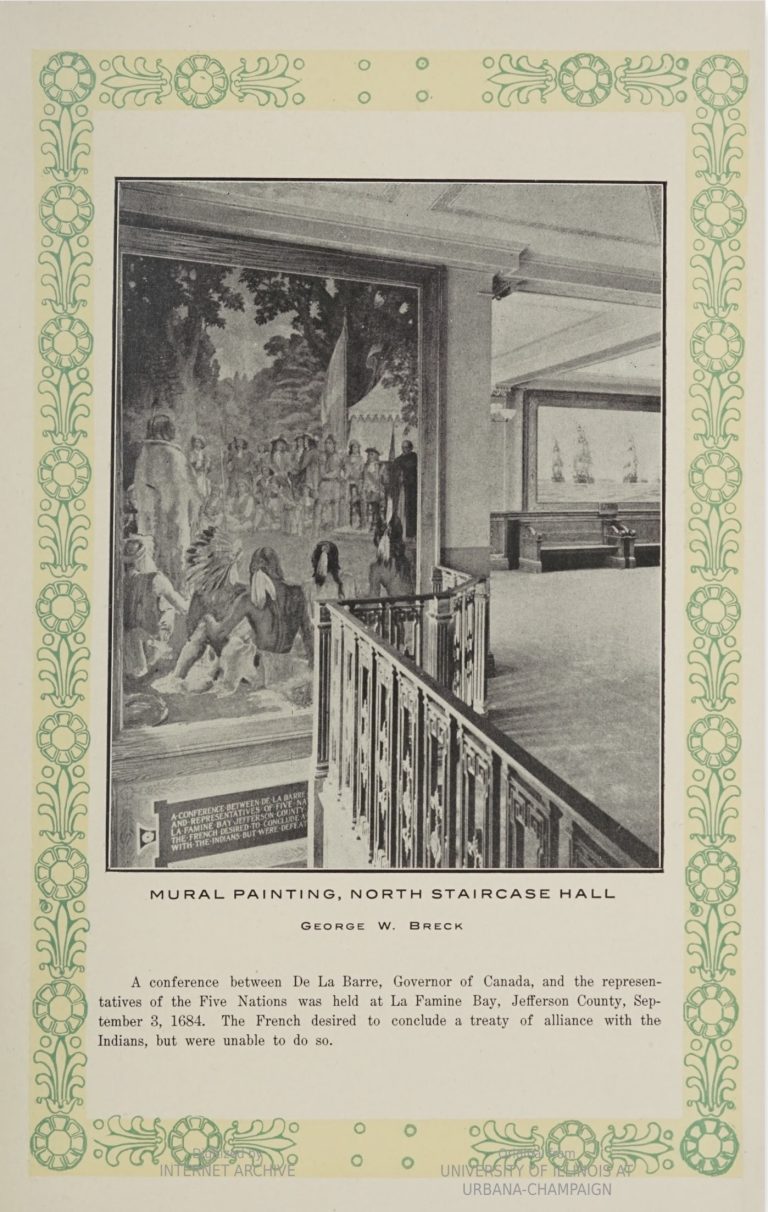
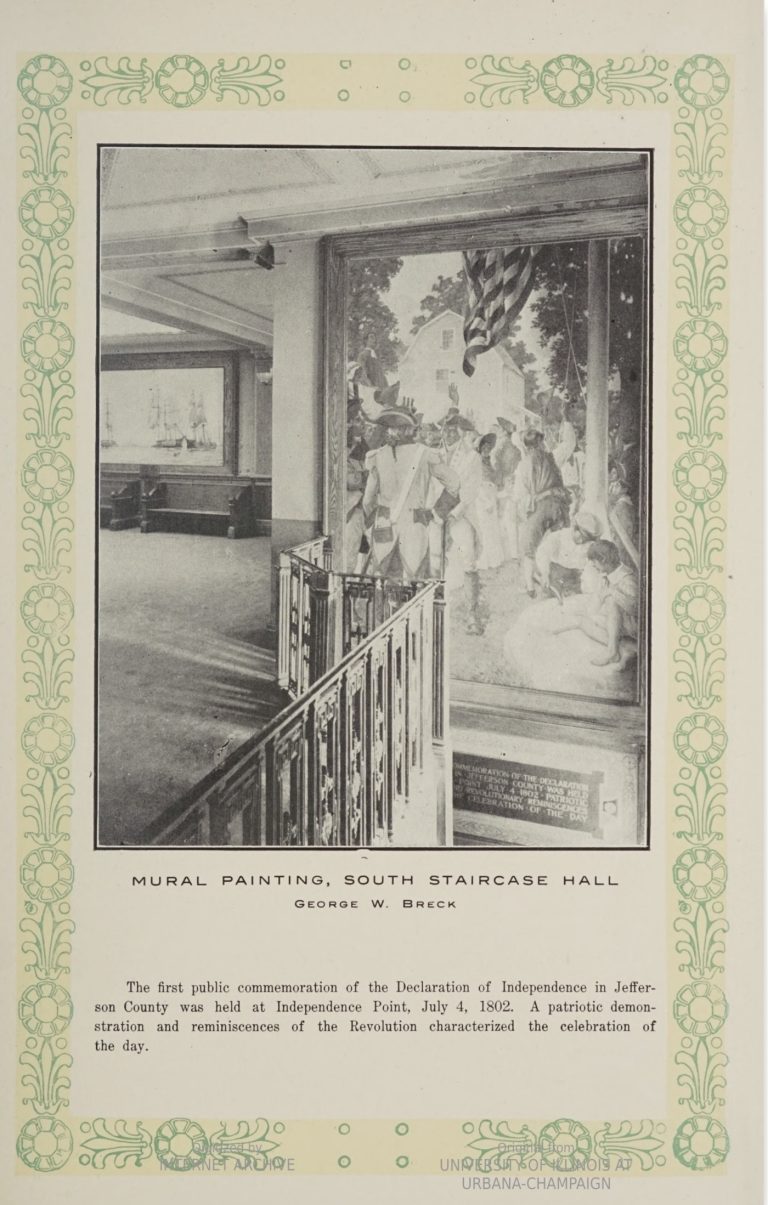
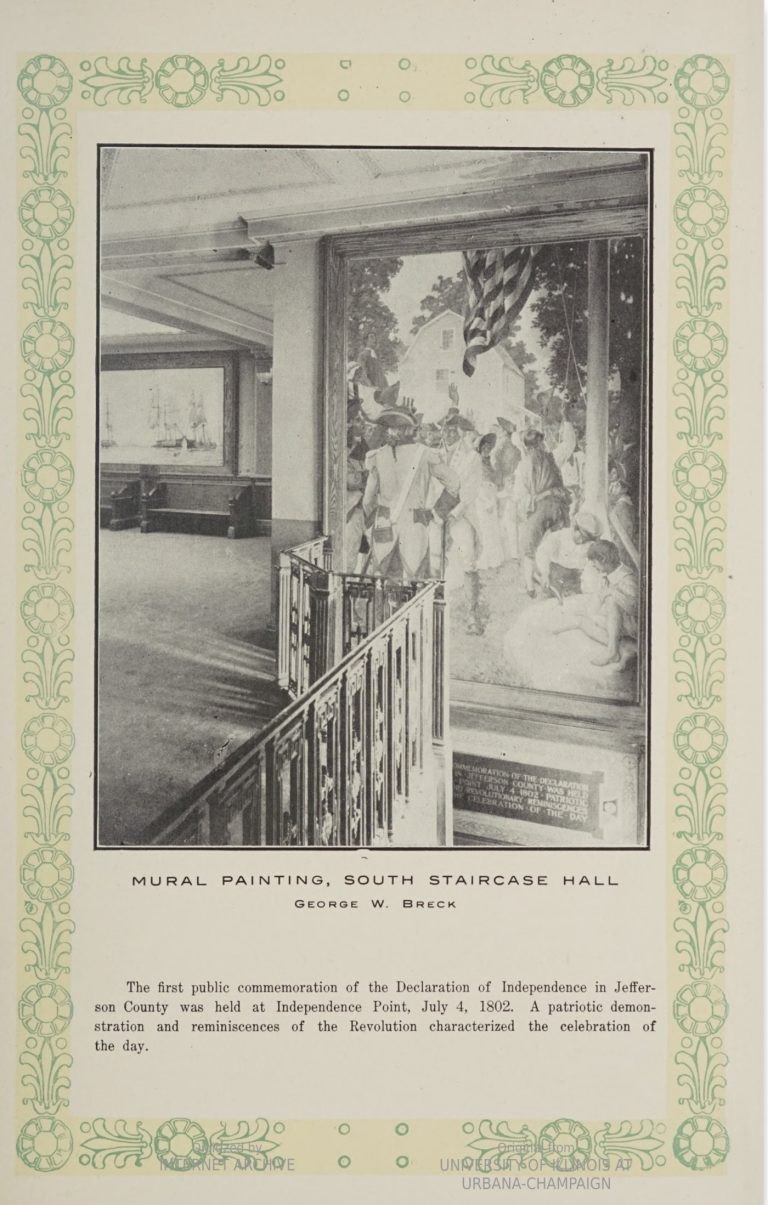
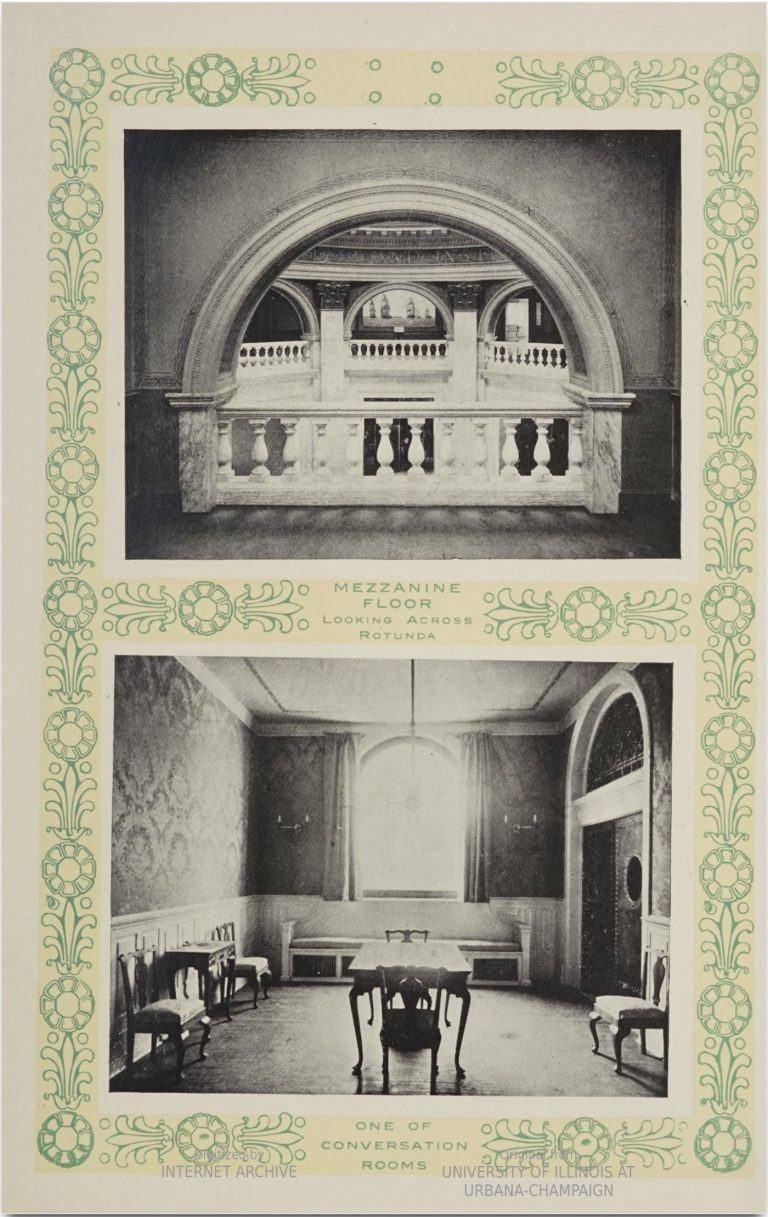
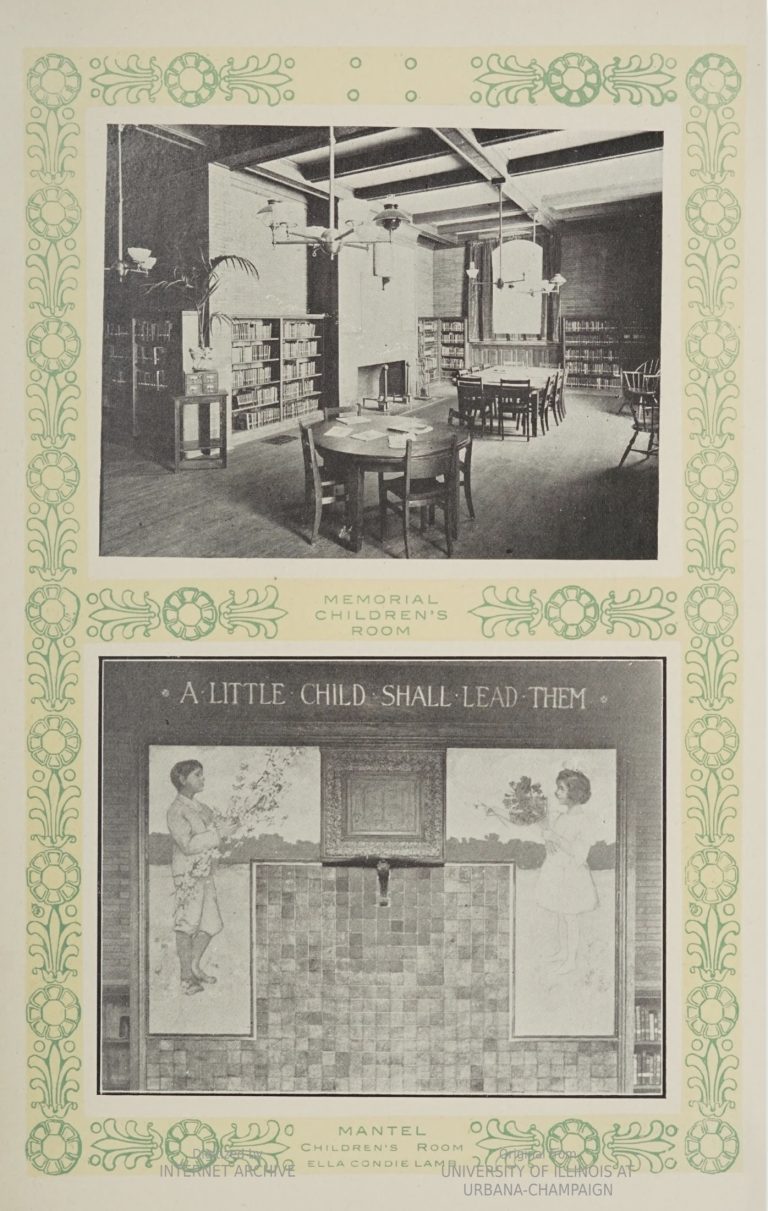

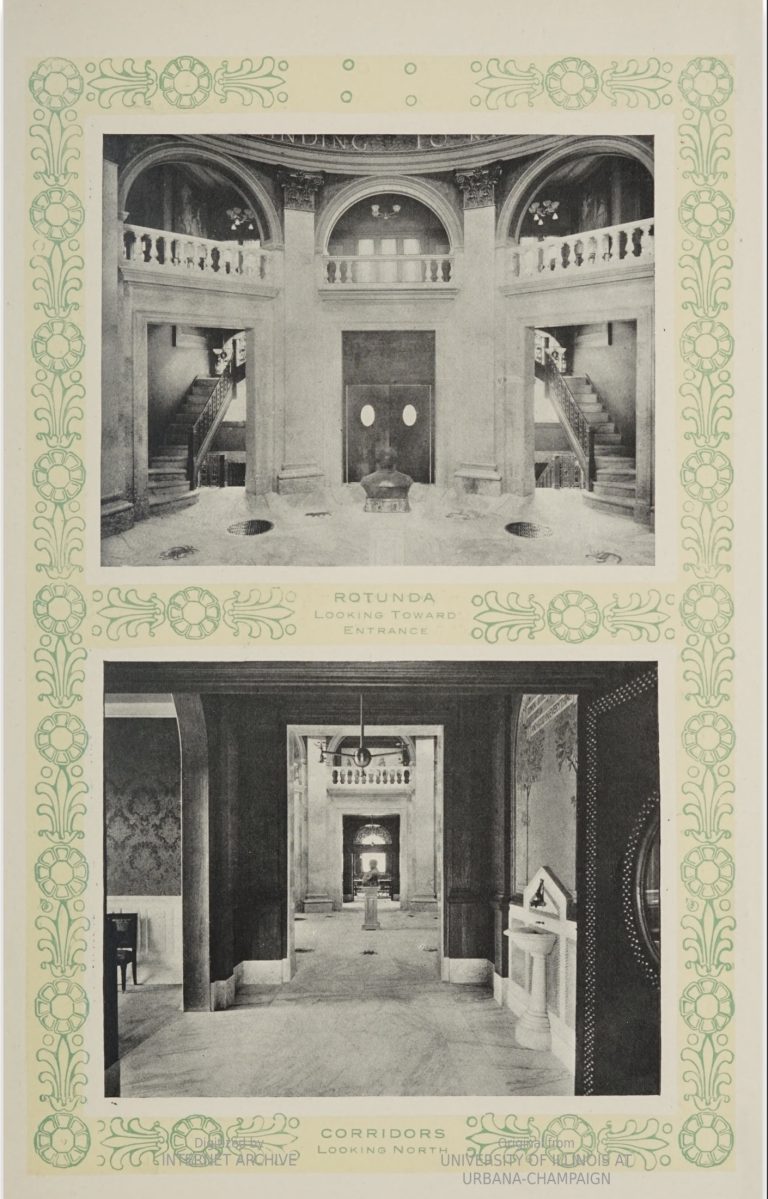
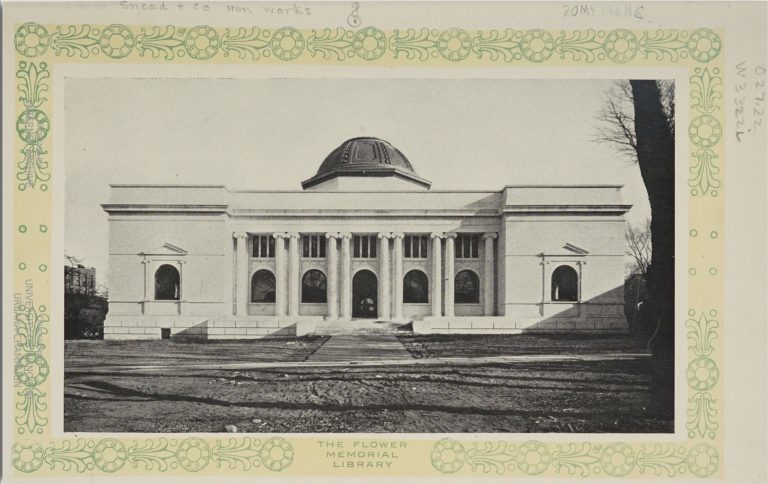

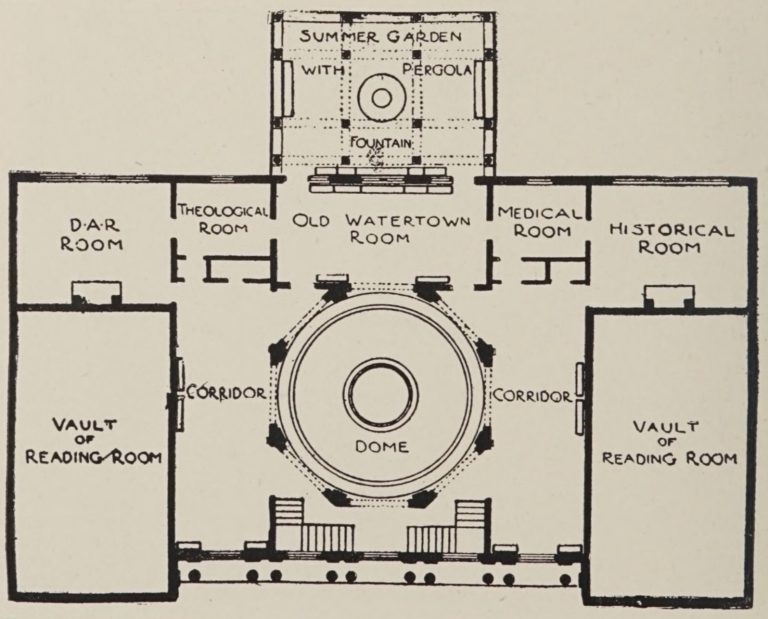
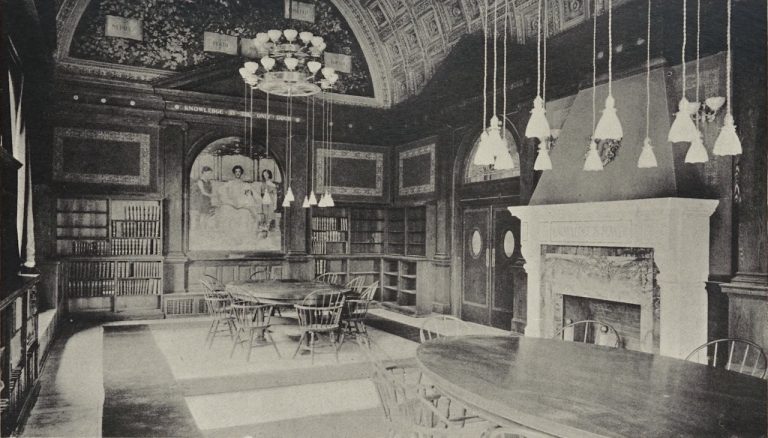




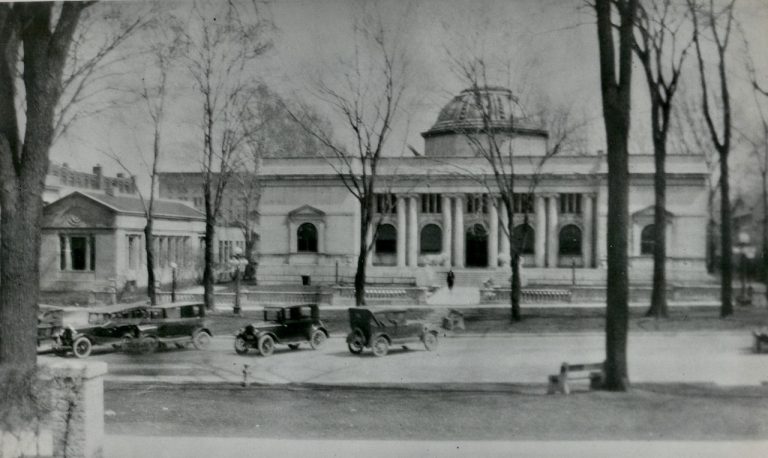
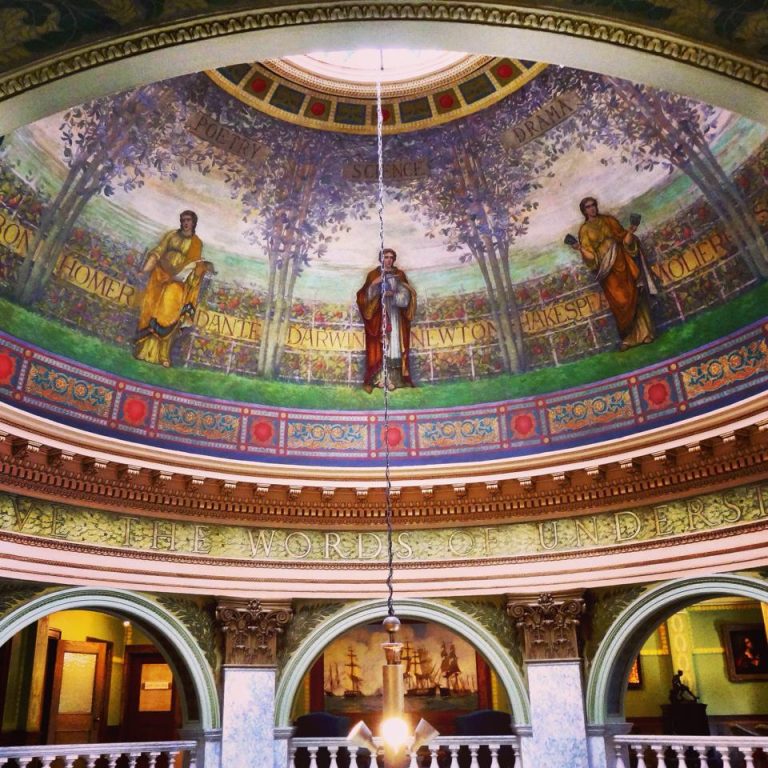

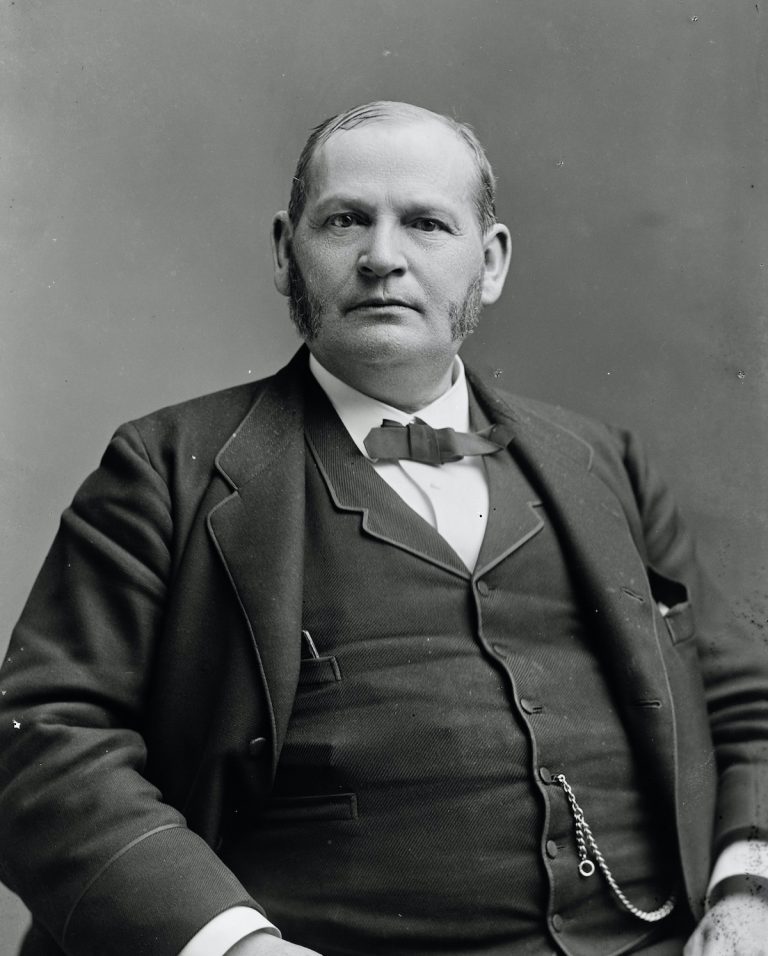

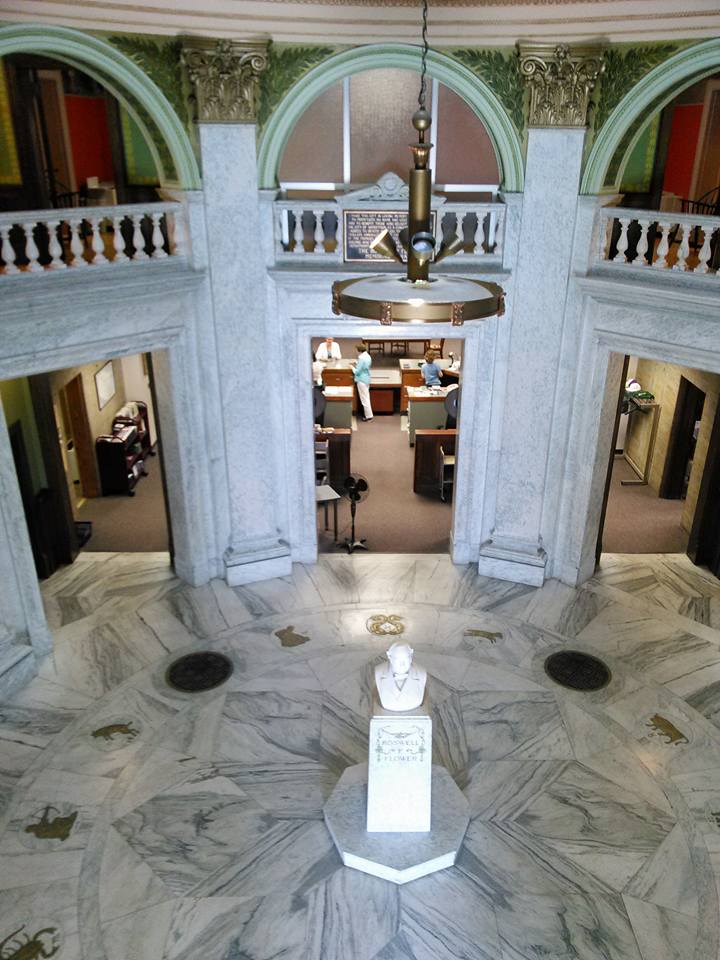
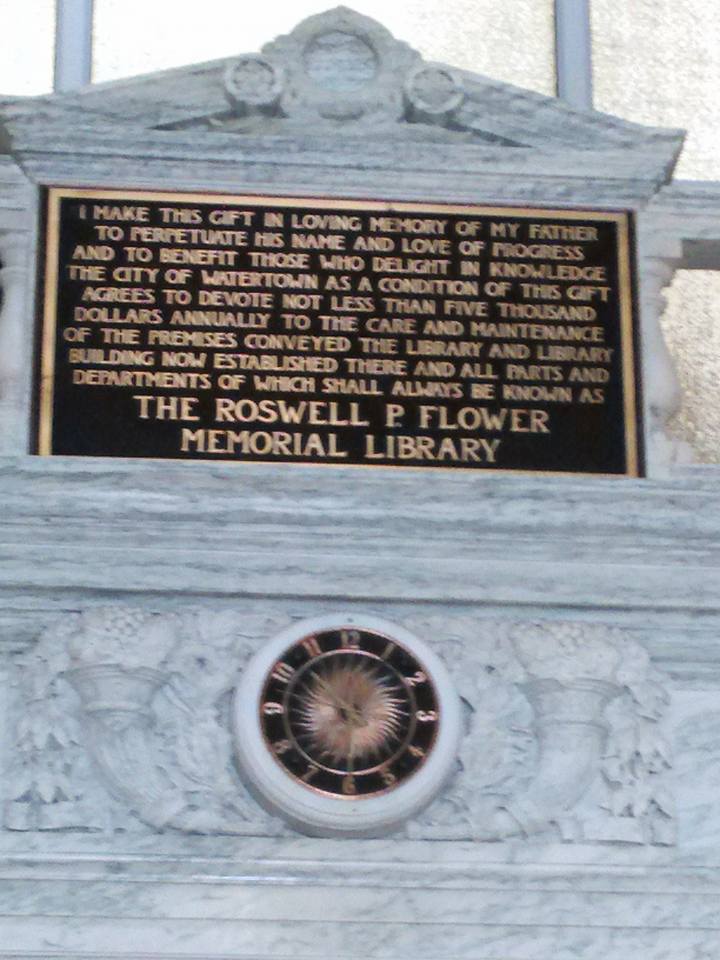

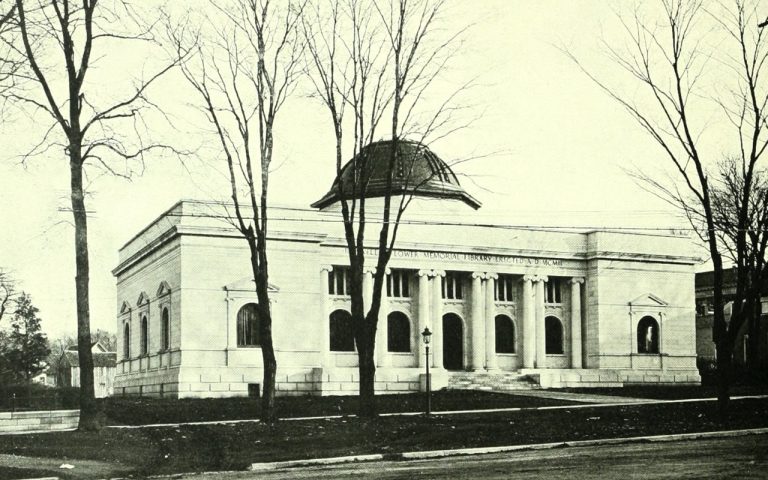
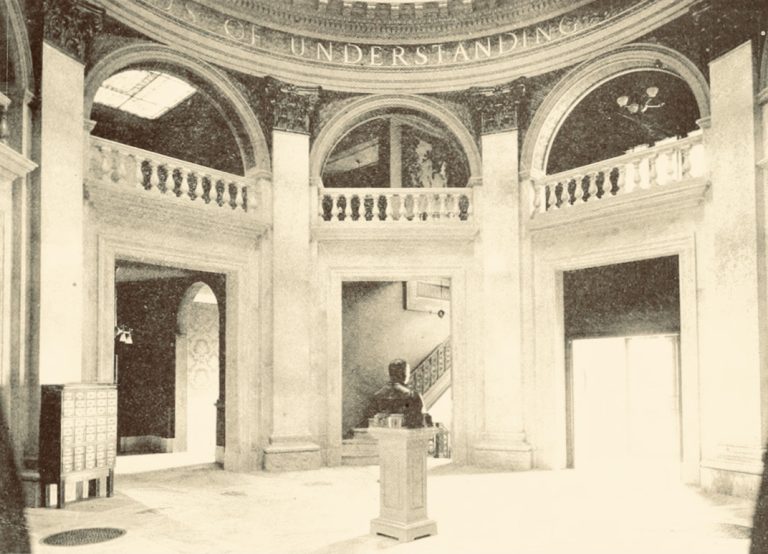
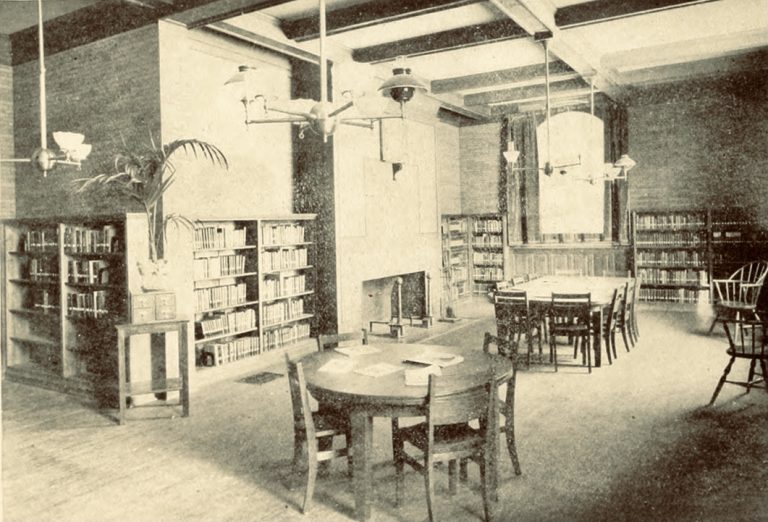
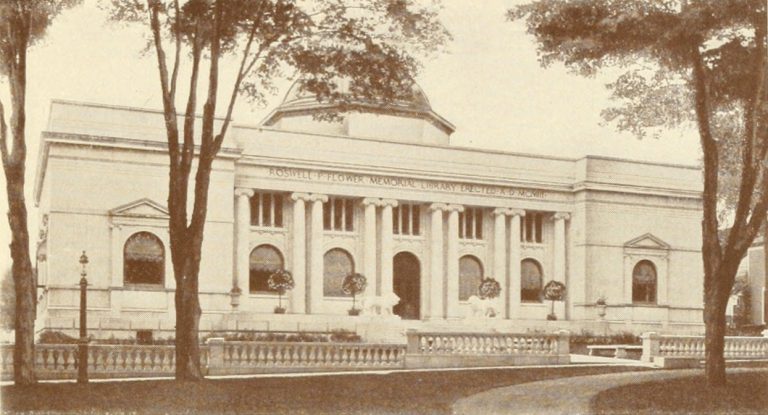
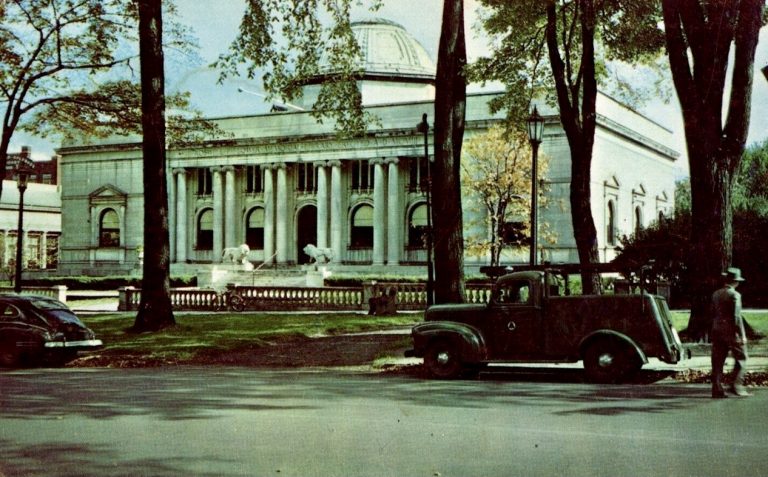
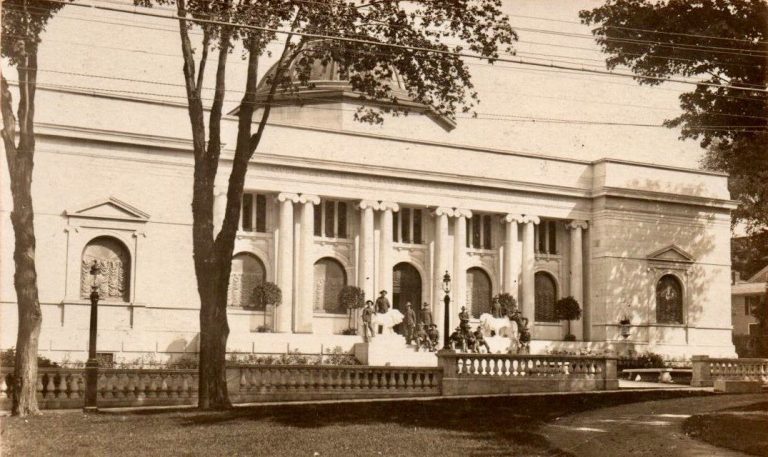
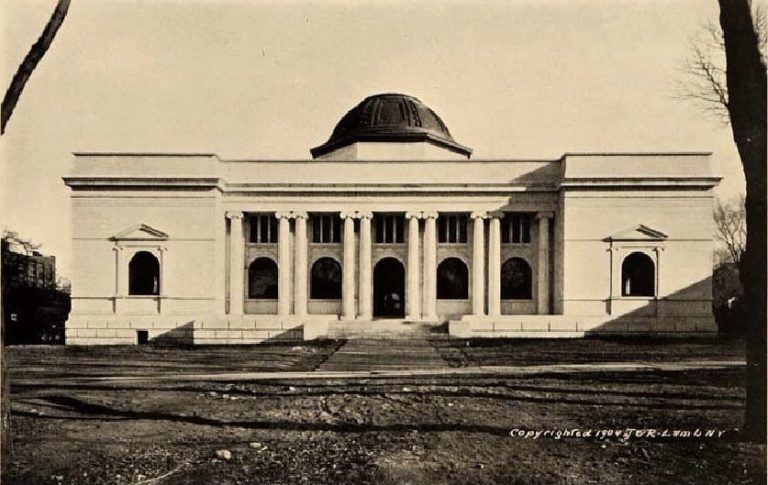
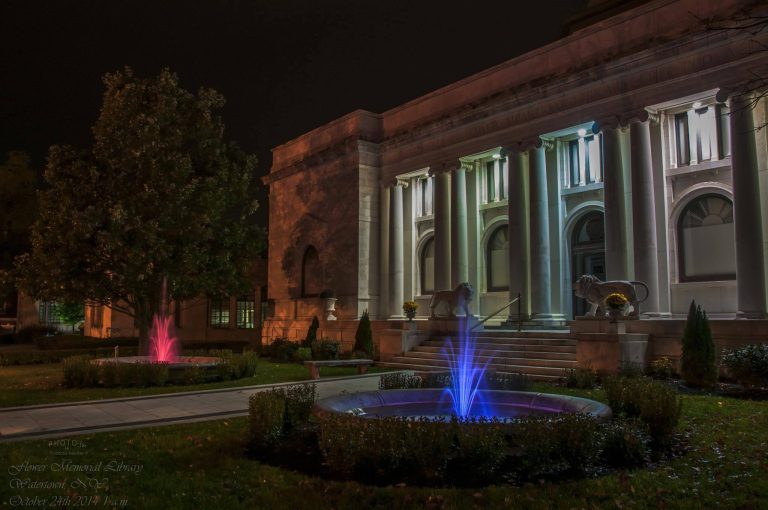
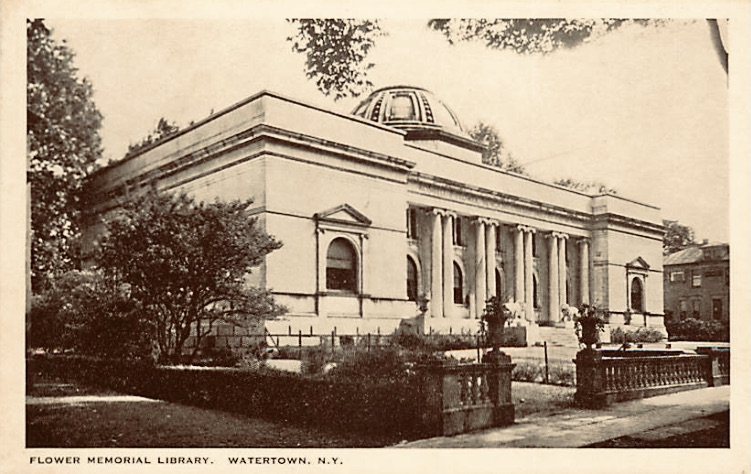
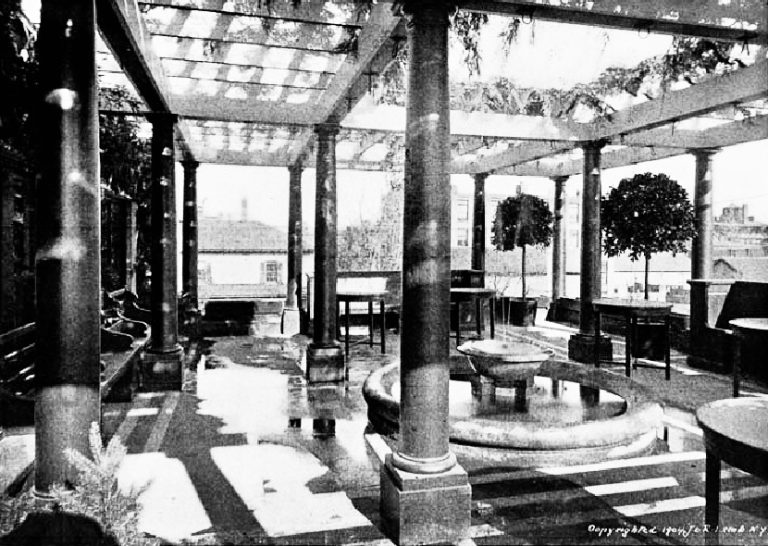
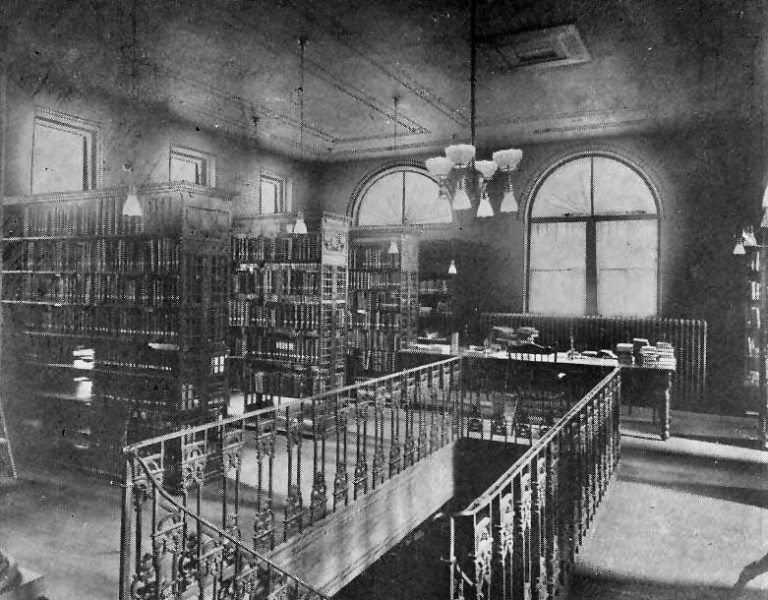

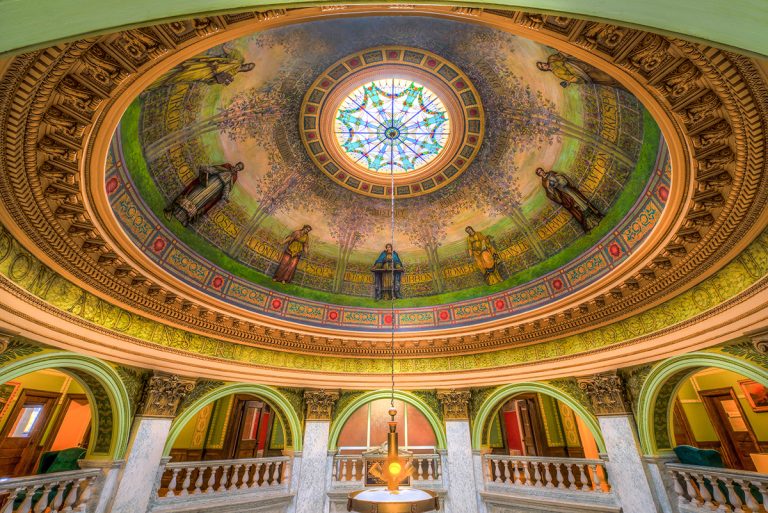
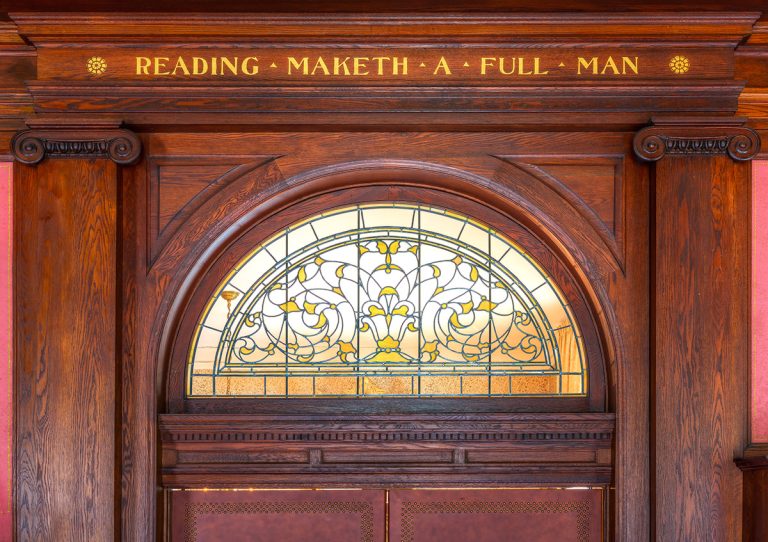
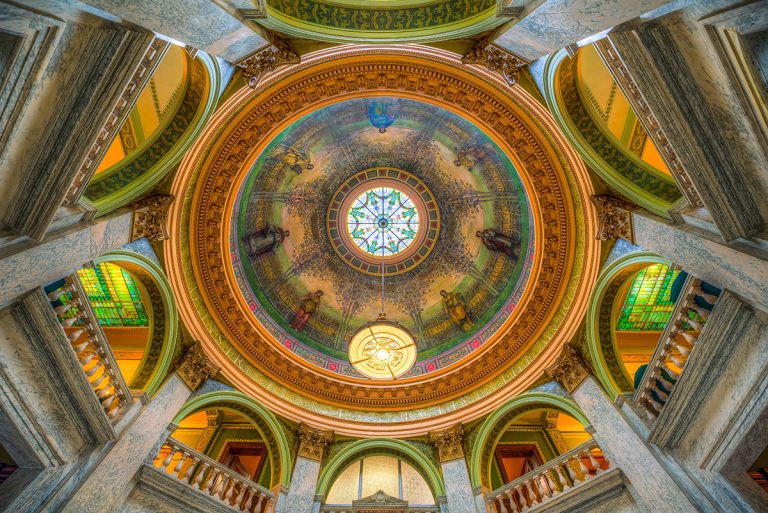
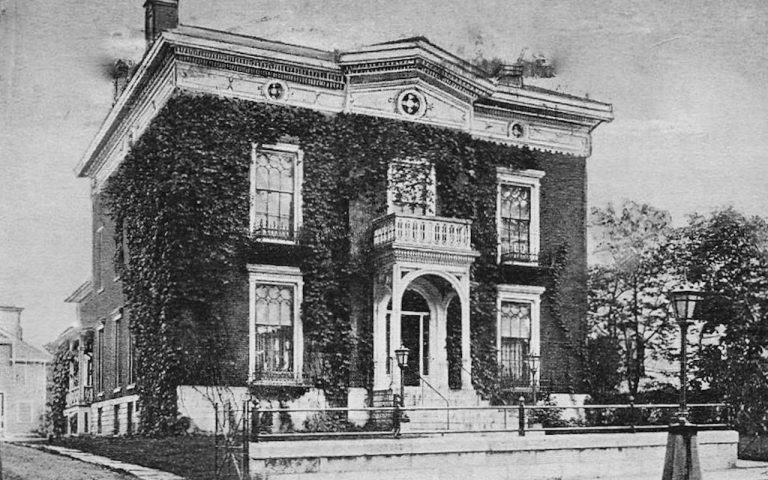
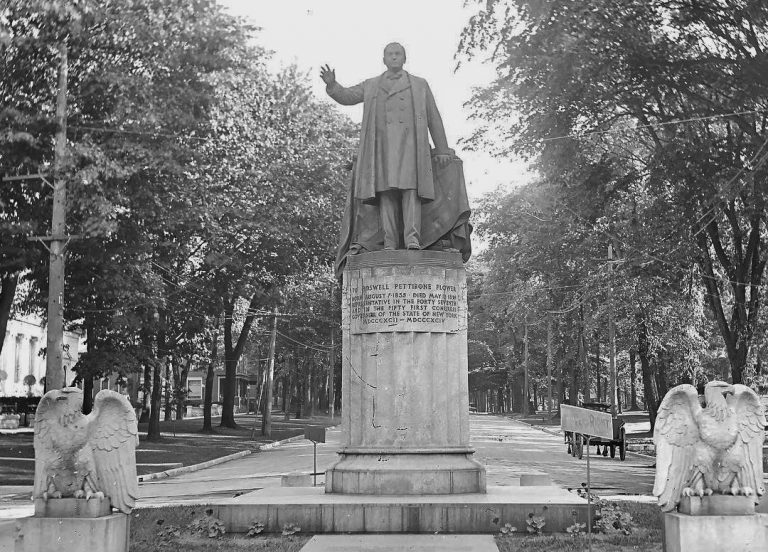

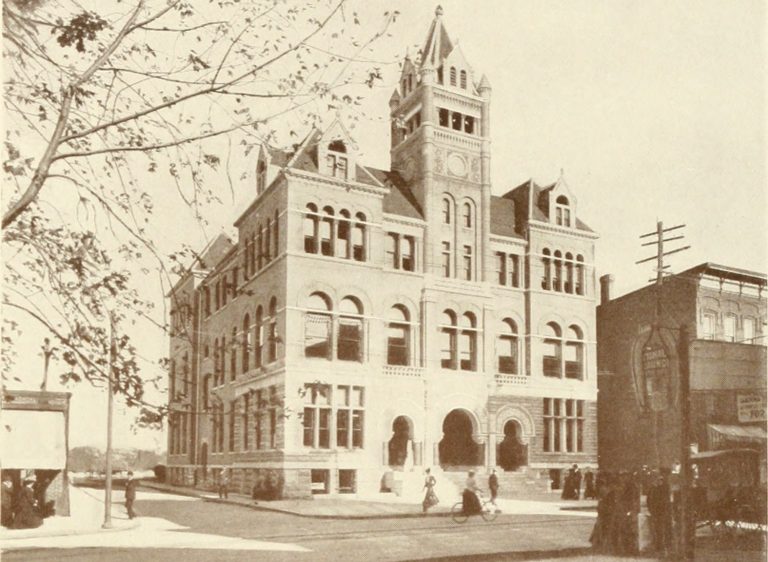

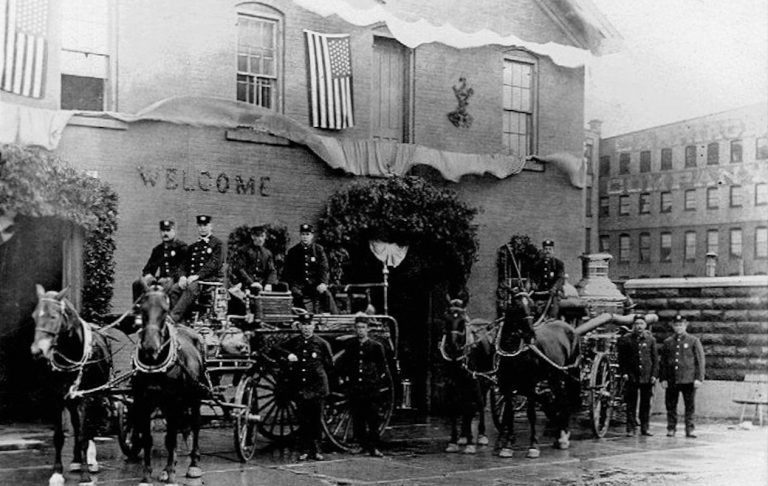
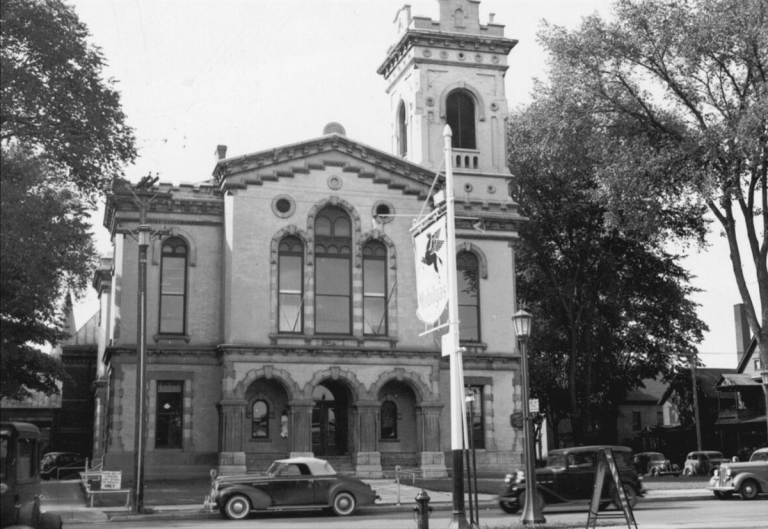
3 Reviews on “Roswell P Flower Memorial Library (1904 – Present)”
When my family moved to a farm in Jefferson County in 1953, I had no idea what a special library experience was waiting for us in Watertown. Our farming venture was not successful, and apart from the farm work, we had little in the way of entertainment, other than the books we had brought with us, and subscriptions to the Watertown Daily Times and the Saturday Evening Post. Then somehow, we discovered the Flower Memorial Library. I had no idea how special it was, having nothing to compare it with, except the limited school library in my school back in Pennsylvania, but I soon realized that every time I entered the Children’s Room, my horizons would be broadened with the treasure that was there for the asking. Over the next few years, I read my way through the entire children’s fiction section. Every Saturday, when we came to town for groceries, my parents and I would spend a half hour or so in the library, selecting hours of escape from the unending work that awaited us back on the farm. And it was not just the treasure in the books, but also the calm coolness of the library, the rich colors of the stained glass, the murals in the stairways, and, of course the mysterious naked lady playing with a turtle, that nourished my child’s eyes and mind. I loved the lions standing guard at the door, and named them Barnabus and Saul, after the cats in one of my favorite books.
I’m not saying that my hours spent in the Flower Memorial Library are the reason that I became a librarian, leading a satisfying forty year career, helping others to find the key to the treasure troves of knowledge and enjoyment awaiting them in the libraries in their lives. But that’s probably what happened.
Thank you for sharing! It’s interesting to see there’s a bit of a through-line in all of our lives, starting with impressions made while younger and the people and vocations we might hold later in life.
It’s reminiscent of Andrew Carnegie’s own journey in the sense that the library for him was the place he looked so eagerly to spend his Saturdays, coming from a poor home with nothing much else to escape to – only to become the richest American in history and build countless libraries, galleries and museums around the country later in life to the equivalent of over $5 Billion dollars in today’s currency value.
I spent a lot of time at the library in elementary school and was a voracious reader with an insatiable appetite for knowledge. Still am!
I spent many, many hours in this beautiful library. Such wonderful childhood memories. I write historical fiction about the Thousand Islands Gilded Age and have long wanted to include “my” library in one of my stories. And this article has inspired me. Now to get writing. Thanks. If you’d like to see my other stories about the area and this time in history, check out http://www.SusanGMathis.com/fiction. Smiles, Susan G Mathis
Thank you for the kinds words! Happy to see it’s inspiring creativity – I know writing about these historical places and events certainly inspires me in more ways than one! Happy writing!
I discovered the wonderful world of reading in my single digit years. My aunt and great grandmother would show me a new way to entertain myself. I spent many Saturday afternoons in the children’s room at Flower Memorial choosing titles and reading in cozy room. Attending JCC in 1979 my work study position was at North Country Library System and when I returned to complete my degree at FLCC a few years ago, I worked at the college’s library. What great memories!
Thanks for sharing! I loved sitting up on the 2nd floor of the JCC library while going there, looking out at the pine trees as my mind wandered. When I transferred I had several libraries to choose from, all of them quite different from one another. Nevertheless, I felt at home wherever there was a desk and books!
I have to admit, since going digital with reading I no longer feel as smart, mostly because I don’t have a rows of books at a desk. Somehow, they’re presence along inspired me. I don’t get that feeling with looking at an app on my phone or computer, lol.